Framework for adopting a capital charge for market risk in Rwanda and training of the staff of the NBR and the banks
Context
In recent years, the National Bank of Rwanda (NBR) has undertaken a number of initiatives to strengthen its regulatory framework for financial institutions. These include the development of a risk-based supervisory framework, enhancement of its off-site surveillance system and initiation of plans to develop a framework for the practice of consolidated supervision. The NBR wanted to further strengthen its capital adequacy framework by adopting a capital charge for market risk.
Objectifs

The main objective of this study was to assist the National Bank of Rwanda (NBR) to develop a framework to adopt a capital charge for market risk.
The specific objectives are to:
- Make an overview of market risks inherent to the banking sector;
- Elaborate guidelines and methods for identification, measurement, analysis and management of market risks;
- Identify banking products/instruments in the trading and banking books which carry market risk;
- Calculate a capital charge for market risk using the Standardized Measurement Approach given by the Basel Committee on Banking Supervision;
- Make a report and presentation on the latest regulatory perspectives and other significant considerations affecting capital adequacy requirements for banks and other financial institutions;
- Use real-world financial statements and prepare a computerized model to illustrate the computation of a capital charge for market risks;
- Write a policy paper on development of a framework to adopt a capital charge for market risk;
- Elaborate guidelines on a capital charge for market risk to be introduced to the staff of both the NBR and banks;
- Write a draft proposal for an amendment to the existing capital adequacy requirement.
Services provided by CESS
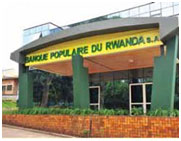
- Survey on financial institutions;
- Identify the products/instruments on the banks’ trading and banking books which carry market risk;
- Write a draft report on guidelines and best practices (identification, measurement, monitoring and control of market risks);
- Develop an Excel spreadsheet for the calculation of market risk capital charge;
- Perform training and dissemination seminars for staff of the NBR, commercial banks and other financial institutions
Resultsachieved
 Draft report “Overview on market risk management practices and market risk-sensitive financial instruments in Rwanda’s banking sector”;
Draft report “Overview on market risk management practices and market risk-sensitive financial instruments in Rwanda’s banking sector”;- Draft report “Capital Adequacy Requirement for Market Risk”;
- Draft report on “ Interest rate risk management”;
- Excel spreadsheet for the calculation of market risk capital charge and the capital adequacy ratio;
- Training of the staff of the NBR and the financial institutions on the proposed market risk capital charge framework..
Ghana Agricultural Sector Budget Support 2009-2013
Context
 Following the Paris Declaration in 2005, the 2008 Accra Agenda and broad implementation of Managing for Development Results (MfDR) concepts, developing countries and development partners (DPs) are moving their cooperation from investment projects to budget support. Budget support as a share of official Development Aid (ODA) has thus increased in most developing countries. This is particularly true for the case of Ghana. The Canadian International Development Agency (CIDA) was one of the first partners to provide budget support to the agricultural sector of Ghana starting in 2004. CIDA’s financial support has averaged $20 million per year between 2004 and 2011.
Following the Paris Declaration in 2005, the 2008 Accra Agenda and broad implementation of Managing for Development Results (MfDR) concepts, developing countries and development partners (DPs) are moving their cooperation from investment projects to budget support. Budget support as a share of official Development Aid (ODA) has thus increased in most developing countries. This is particularly true for the case of Ghana. The Canadian International Development Agency (CIDA) was one of the first partners to provide budget support to the agricultural sector of Ghana starting in 2004. CIDA’s financial support has averaged $20 million per year between 2004 and 2011.
The first budget support ($85 million) covered the period 2004-08 followed by $20 million in a bridging year. The second budget support, totals $110 million, is currently being implemented and covers 2009-13. As with all budget support initiatives, CIDA is working in close cooperation with other donors and the Government of Ghana (GoG) to strengthen aid effectiveness. Given its substantial investment in the agricultural sector, CIDA wanted to assess its current and past support to the Ministry of Food and Agriculture (MoFA). This was the main purpose of this project.
Objectives

At the mid-term of its second budget support, CIDA would like to assess the efficacy and efficiency of this support and learn ways to improve this and future ones. The main objective of this assignment was to evaluate the results, the effectiveness and efficiency of budget supports to date while providing guidance on how to more effectively implement budget support programs with MoFA.
The specific objectives are to:
- Assess sector-specific results achieved;
- Evaluate the implementation of budget support programs
- Assess the Institutional development results
- Assess the effectiveness of budget support programs
- Identify lessons learned during the process of implementing budget support to MoFA since it began in 2004
- Provide key recommendations to improve implementation of budget support programs for the remaining two years of sector budget support, for both institutions
- Provide recommendations for future large-scale support to Ghana’s food and agricultural sector.
Services provided by CESS
- Desk review of the Budget Support;
- Field visit in Ghana (Accra and Tamale);
- Meeting with the main stakeholders (CIDA, MoFA, beneficiaries population);
- Assessment of the budget support.
Resultsachieved
 Évaluer les résultats sectoriels atteints;
Évaluer les résultats sectoriels atteints;- Assessment of results, effectiveness and efficiency of budget supports of CIDA to MoFA;
- Design of recommendations for future large-scale support to Ghana’s food and agricultural sector provided
- Recommendations to improve implementation of budget support programs for the remaining two years of sector budget support, for both institutions.
Articulating Africa’s position on the post-2015 MDG Agenda
 Context
Context
The MDGs are a set of eight specific goals (many of them quantitative) that aim to improve human welfare. Indeed the aim of these MDGs is to help improve the welfare of the population in emerging and developing countries. As we approach the target date of 2015 to achieve these objectives, questions are increasingly being asked about what should be done beyond 2015.
Objectives
 The overall objective of the workshop was to ensure that ECA’s contribution to the UN publication is constructive, comprehensive and a true reflection and articulation of Africa’s position on the post-2015 MDG agenda.
The overall objective of the workshop was to ensure that ECA’s contribution to the UN publication is constructive, comprehensive and a true reflection and articulation of Africa’s position on the post-2015 MDG agenda.
The specific objectives were to:
- identify Africa’s development priorities for the post-2015 MDG Agenda
- inform the post 2015 Agenda debate based on the outcome of the meeting
- build consensus and partnership for national level consultations on the post-2015 MDG agenda
- assess the likely implications of the post-2015 agenda for MDG-based planning in Africa.
Services provided by CESS
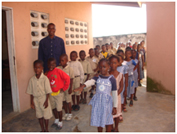 Writting a paper on “The Post-2015 Development Agenda: the Case for Retaining the MDGS in their Current
Writting a paper on “The Post-2015 Development Agenda: the Case for Retaining the MDGS in their Current- Chair a the break out session during the workshop
- Preparation of a report of the workshop deliberations and findings.
Results achieved
- Drafting and presentation of “The Post-2015 Development Agenda: the Case for Retaining the MDGS in their Current Configuration”.
Economic Rate of Return Update and Beneficiary Analysis
Context
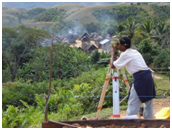
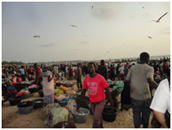 The projects are for: (i) Access to Land; (ii) Access to Financial Services, (iii) Access to Justice; and (iv) Access to Markets. In order to carry out an economic evaluation of the four MCA-Benin projects, a cost-benefit analysis to evaluate the economic impact of each project was estimated using the economic rate of return (ERR). Estimation of the ERRs can inform investment decisions and provide an estimate of the total increase in income that can be attributed to each project in relation to its total costs. This estimate was ex-ante in 2006, and involved assumptions in terms of project implementation and with respect to estimates of variables and parameters
The projects are for: (i) Access to Land; (ii) Access to Financial Services, (iii) Access to Justice; and (iv) Access to Markets. In order to carry out an economic evaluation of the four MCA-Benin projects, a cost-benefit analysis to evaluate the economic impact of each project was estimated using the economic rate of return (ERR). Estimation of the ERRs can inform investment decisions and provide an estimate of the total increase in income that can be attributed to each project in relation to its total costs. This estimate was ex-ante in 2006, and involved assumptions in terms of project implementation and with respect to estimates of variables and parameters
Objectives
The main objective of the study is to design the models used to evaluate the economic returns of the Program and to conduct a detailed analysis of their respective beneficiaries.
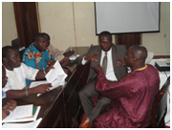
- Update the existing ERR models of the four projects or design new models ex post;
- Develop a “Poverty Scorecard” for each projectwith a detailed description of the poor; and
- Carry out a detailed beneficiary analysis, to provide clarifications and references in relation to forecasts presented in the poverty scorecard and highlight other information that is not included.
Services provided by CESS
- Update and design of the ERR models of the 4 projects
- Estimation of ERR
- Beneficiary analysis of each project.
Results achieved
- ERR of the four projects
- Beneficiary analysis of the four projects
- Poverty Scorecards of the four projects.



